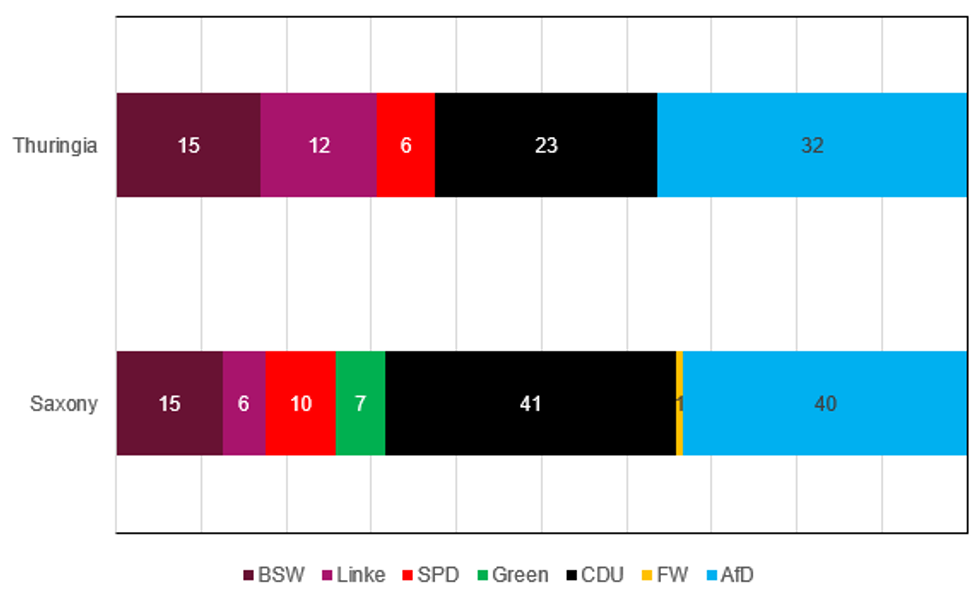-
Policy
Policy
Exclusive interviews with leading policymakers that convey the true policy message that impacts markets.
LATEST FROM POLICY: -
EM Policy
EM Policy
Exclusive interviews with leading policymakers that convey the true policy message that impacts markets.
LATEST FROM EM POLICY: -
G10 Markets
G10 Markets
Real-time insight on key fixed income and fx markets.
Launch MNI PodcastsFixed IncomeFI Markets AnalysisCentral Bank PreviewsFI PiFixed Income Technical AnalysisUS$ Credit Supply PipelineGilt Week AheadGlobal IssuanceEurozoneUKUSDeep DiveGlobal Issuance CalendarsEZ/UK Bond Auction CalendarEZ/UK T-bill Auction CalendarUS Treasury Auction CalendarPolitical RiskMNI Political Risk AnalysisMNI Political Risk - US Daily BriefMNI Political Risk - The week AheadElection Previews -
Emerging Markets
Emerging Markets
Real-time insight of emerging markets in CEMEA, Asia and LatAm region
-
Commodities
-
Credit
Credit
Real time insight of credit markets
-
Data
-
Global Macro
Global Macro
Actionable insight on monetary policy, balance sheet and inflation with focus on global issuance. Analysis on key political risk impacting the global markets.
Global MacroDM Central Bank PreviewsDM Central Bank ReviewsEM Central Bank PreviewsEM Central Bank ReviewsBalance Sheet AnalysisData AnalysisEurozone DataUK DataUS DataAPAC DataInflation InsightEmployment InsightGlobal IssuanceEurozoneUKUSDeep DiveGlobal Issuance Calendars EZ/UK Bond Auction Calendar EZ/UK T-bill Auction Calendar US Treasury Auction Calendar Global Macro Weekly -
About Us
To read the full story
Sign up now for free trial access to this content.
Please enter your details below.
Why MNI
MNI is the leading provider
of intelligence and analysis on the Global Fixed Income, Foreign Exchange and Energy markets. We use an innovative combination of real-time analysis, deep fundamental research and journalism to provide unique and actionable insights for traders and investors. Our "All signal, no noise" approach drives an intelligence service that is succinct and timely, which is highly regarded by our time constrained client base.Our Head Office is in London with offices in Chicago, Washington and Beijing, as well as an on the ground presence in other major financial centres across the world.
Real-time Actionable Insight
Get the latest on Central Bank Policy and FX & FI Markets to help inform both your strategic and tactical decision-making.
Free AccessMNI China Daily Summary: Friday, December 13
MNI US OPEN - UK Economy Contracts for Second Straight Month
AfD Strength Grabs Headlines, But Many Obstacles To Party Taking Power
Strong results for the far-right Alternative for Germany (AfD) in state elections in Saxony and Thuringia have garnered significant media attention following the 1 September vote. The AfD came first in Thuringia (the only time to date the party has topped the poll in a state election) and second place, narrowly behind the centre-right Christian Democratic Union (CDU), in Saxony.
- The parties of the federal coalition (Olaf Scholz's SPD, Greens, FDP) all recorded notable declines in vote share, with the FDP and Greens losing all their seats in Thuringia having fallen under the 5% threshold. The far-left nationalist Bundnis Sara Wagenknecht (BSW) made significant gains, coming in third in both states.
- While the results are headline-grabbing they should not be blown out of proportion. Both of these states sit in the former East Germany, where the AfD has its highest levels of support. They also contain less than 10% of the German population and comprise less than 5% of the country's economy. As such, these results should not necessarily be viewed as indicative of political sentiment across Germany.
- Focus turns to coalition formation and whether the cordon sainitaire around the AfD remains in place. In each state the CDU would have to rely on the support of the BSW or progressive far-left Linke in order to gain a majority without the AfD, a difficult political partnership to say the least.
Chart 1. Saxony and Thuringia State Election Results 1 Sep, Seats
 Source: Regional interior ministries, MNI
Source: Regional interior ministries, MNI
To read the full story
Sign up now for free trial access to this content.
Please enter your details below.
Why MNI
MNI is the leading provider
of intelligence and analysis on the Global Fixed Income, Foreign Exchange and Energy markets. We use an innovative combination of real-time analysis, deep fundamental research and journalism to provide unique and actionable insights for traders and investors. Our "All signal, no noise" approach drives an intelligence service that is succinct and timely, which is highly regarded by our time constrained client base.Our Head Office is in London with offices in Chicago, Washington and Beijing, as well as an on the ground presence in other major financial centres across the world.
